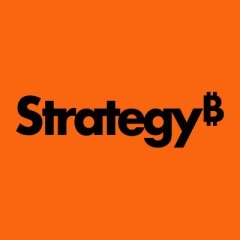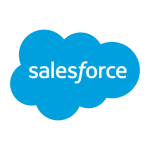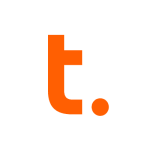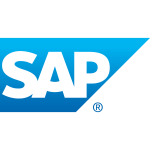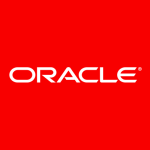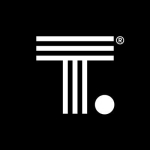What is our primary use case?
We use it mostly for business intelligence reporting, especially in personal lines of insurance, because of its pattern processing and other good functionalities, its key capabilities. It's a customer-friendly tool, especially with the Dossiers. And in the past we have had Visualization Galleries. So we leverage it, not only for reporting but for analytics and also for geospatial reporting.
In terms of its performance, when compared with other products that we have, Cognos, QlikView, Tableau, I would rate MIcroStrategy number one in the above terms.
How has it helped my organization?
Definitely in the past, when we had so many legacy systems, with Cognos and others, it was took multiple steps to get what we wanted. We used to extract data from Cognos, pointing to any database, load the data into Access databases, and then some BA or system analyst used to create reporting out of it.
But now, it's a seamless integration. We can connect directly, in the form of In-Memory Cubes or live-publish cubes, to the data warehouse, and blend in the data with big data. Not only relational databases, but we can also integrate other third-party files, and create a single-source software. So, from that perspective, especially in personal insurance, it keeps BI, business intelligence, in the hands of everyone, rather than a developer or an analyst. Now mostly everyone in our area, the travelers, they have self-service.
What is most valuable?
Reporting for everyone; anyone from the customer, analyst, analytics, we have BAs. Everyone can use it because of Dossier and, in the prior versions, we have Visual Insights. It's custom-friendly, we can blend in a lot of data, single source software.
In 2018 I expect the capability we will use will be Dossier. That is story boarding. Because in late 2016 and early 2017, no other tool had this kind of story boarding, storytelling feature. Our CIO called for a PoC. There was a tool which was rated highly by industry reviews, which plays story data. We did a PoC. And although we liked the story boarding feature, thereafter, the things that we had to do behind the screens for the story boarding, we didn't like, we liked MicroStrategy more.
Now we can collaborate, in real time. In the past we had to wait for our business partners say if a visualization looked good or sufficed for their requirements. There was no real-time decision making. Now, with Dossier, it will accelerate the velocity of decision making.
The other thing is, now we have Workstation and Desktop on the client side. I think that will speed up some development activities.
What needs improvement?
The 10.4 release is the biggest. I want to play with it to see what else I might want.
Dossier is the thing we were missing previously.
What do I think about the stability of the solution?
Stability is very good. From stability, from usability, from adoptability for the end user. They're quickly adapting the new MicroStrategy features, functionalities. It's seamless for our users. It's a seamless integration.
What do I think about the scalability of the solution?
No issues with scalability. Whenever we have any technical challenges or something we don't know how to, how to integrate, we engage our partners, we reach out to MicroStrategy, and they send their technical support to assist us.
How are customer service and technical support?
Tech support is definitely knowledgeable. We have worked with them since 2010.
Which solution did I use previously and why did I switch?
We prefer having the analytic capabilities in a single platform like MicroStrategy, rather than many solutions. That is one of the main reasons why, in 2012, we switched to MicroStrategy.
Prior to that we had Cognos. To do report design we used to go to Report Studio, for analysis, Analysis Studio, for cubes different front-end applications. And it was so confusing. Now with MicroStrategy as a single-source software and single platform, we can do anything. Not only reporting and analysis; everyone can go to one single location and get what they want. So that is one of the primary reasons we have moved to MicroStrategy.
In the past, I'm talking about 2012, during that time period, we spent a lot of money and a lot of our budget - we allocated something like 20% or 30% for new users to be trained on Cognos and other applications, because there was no single platform. But when we saw MicroStrategy it was a single platform. So we quickly decided, a major decision: Going forward, for any strategy projects, we'll use MicroStrategy.
How was the initial setup?
I was not involved in the initial setup but I have upgraded three versions so far. Upgrading has been straightforward.
What other advice do I have?
Regarding MicroStrategy Mobile, we have some PoCs which will kickstart in few weeks.
Important criteria when selecting a vendor include
- technical support
- reliability
- transparency.
I would give the solution a seven out of 10 for now. I need to play with Dossier and other key capabilities, because initially I did a PoC in 2016-17. It went well when compared to the other products, but it was not sufficient for our requirements. But I went to a few sessions here at MicroStrategy World 2018, yesterday and today and it looks pretty cool. It seems they have improved a lot in the last two years. So I need to play with it more, to see what the footprint in geospatial is like.
Start small and know your goals. Don't try to solve the world.
That is what everyone seems to say. Last year I went to a Big Data conference because we have some Teradata relational databases. Most of the companies, because Teradata is expensive, they want to move to Big Data. And that's what they said too: "Hey, don't try to solve the world, start small. Know what you want to achieve and put together a great team, a great project manager, who can provide realistic information at the right time, rather than at the end of the project."
Those are the key things: the right people, first; the right scope, and start small.
Disclosure: My company does not have a business relationship with this vendor other than being a customer.

